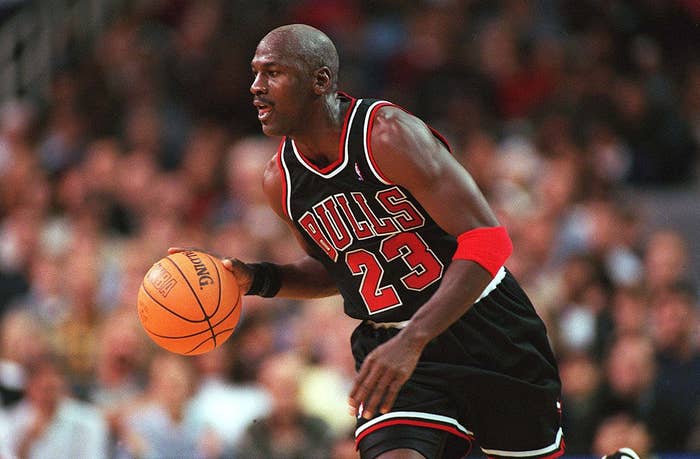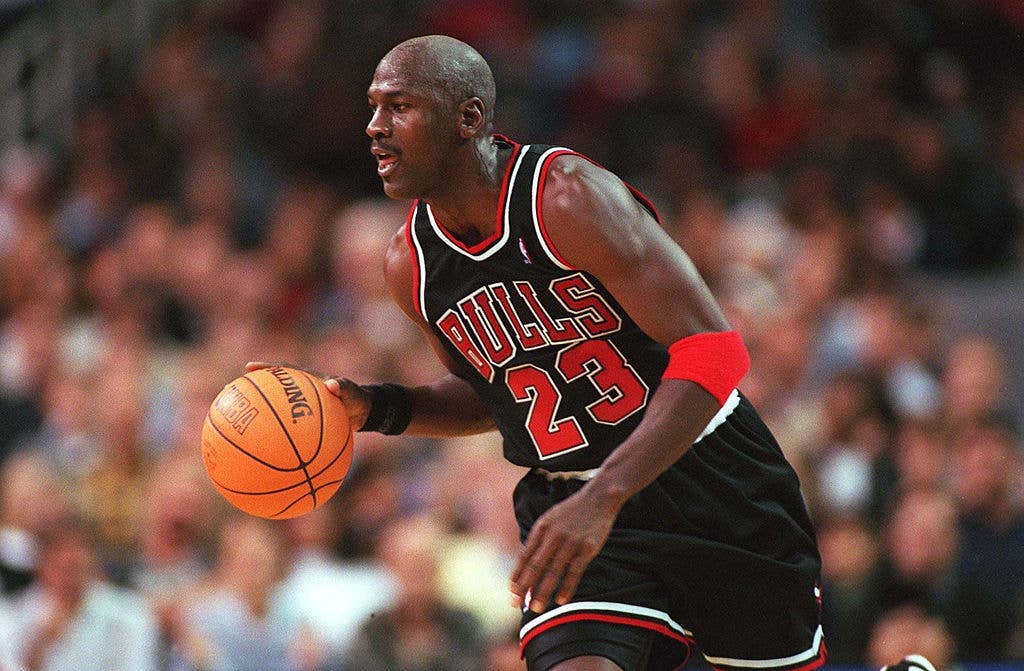
If you’re going to critique certain things about The Last Dance, the music absolutely can’t be one of them.
That's because the low-key star of the ESPN documentary chronicling Michael Jordan and the 1997-98 Chicago Bulls just might be its awesome selection of period-specific music that’s heavy on the old-school hip-hop. And for that, you can thank director Jason Hehir since he’s the one who picked out every track over the doc’s 10 episodes.
“My favorite part of this process was curating music and getting to use all of these songs to expose a new generation to what I feel is the greatest era in hip-hop,” says Hehir.
When you’re telling the story of the most revered and respected athlete of the late 20th century, whose rise coincided with hip-hop’s, it was only fitting that you lace each episode with classic tracks and celebrated deep cuts from the 80s and 90s. Hehir and his documentary crew did their very best to pair the montages with an appropriate song that either debuted or topped the charts around the same time of the flashback. The first track you hear in episode I is Puff Daddy & the Family’s “Been Around the World.” The hit was released in 1997 and plays behind highlights of the Bulls’ highly-publicized trip to Europe that same summer. It was a hint of what’s to come.
“Michael brings us back to an era with his play on the court and I wanted to bring you back to that era with the songs that you remember, from the eras we’re examining,” says Hehir.
Hehir’s love of hip-hop began when he was 8 years old and talking to him it takes less than two minutes to realize his knowledge runs deep. He became a fanatic during the mid-80s when he and his brothers would tune a boombox to a station broadcasting out of Emerson College in Boston. From 9-11 p.m. on Fridays, it would play the latest hip-hop and Hehir and his brothers would tape every session.
That’s why we hear LL Cool J’s “I’m Bad” blaring over the highlights of Jordan dropping a playoff-record 63 points against the Celtics in 1986. Even though the track came out a year after Jordan carved up Boston, hearing LL brag about how nobody can match his skills is among the documentary’s finest flashbacks.
“I felt like we could get away with that even though it wasn’t the exact right date on the calendar. It just seemed like the right anthem for Michael,” says Hehir. “LL’s putting himself on the hip-hop map and Michael’s putting himself on the map on the court.”
It’s Hehir’s favorite montage of the series and it almost didn’t happen. That’s because clearing old-school hip-hop tracks is incredibly difficult thanks to all the samples producers used back in the day. Tracking down every sample owner to get approval is often an impossible task. Hehir couldn’t clear all of them from “I’m Bad.” As a work-around, he used it on a “quit claim basis.” That basically means paying an up-front penalty and gambling that previous commercial uses of the song were similarly unable to clear all the samples.
“There were a few other songs we were going to use instead,” says Hehir, “but I was particularly adamant that we cannot replace ‘I’m Bad’ in that spot because it works so well.”
There was one battle Hehir lost. He really wanted to use Blahzay Blahzay’s “Danger” for a montage on the 72-10 Bulls in a later episode but couldn’t clear the Q-Tip or the Jeru the Damaja samples used in the chorus. He shockingly had an easier time getting the okay to use Prince’s “Partyman” in episode III. In a “Hail Mary” bid, Hehir showed them a rough cut of the montage, and Prince’s estate, with a reputation of refusing to approve requests, consented pretty quickly.
One artist Hehir absolutely had to feature in the doc was Rakim. Eric B. and the God MC’s “I Ain’t No Joke” was used for the montage of MJ’s rookie season in episode I and Hehir believes it was a perfect pairing.
Watch an exclusive clip from #TheLastDance episode 5 before it debuts on Sunday. https://t.co/yEfEm9oIdB pic.twitter.com/zWJn6lNuLz
“In my mind, Michael is the Rakim of the NBA,” says Hehir. “It was a simple game, not a lot of showmanship before he came in and he turned the world on its ear. I think that’s what Rakim did to the hip-hop game.”
While Hehir will take credit for the final selection of each track, he had help narrowing down the candidates. Not everyone who worked on The Last Dance was a sports fan and knew Jordan’s story, but they were all music lovers. So the creative process of pairing a period-appropriate track to each montage “was really collaborative and my favorite part,” says Hehir.
Sometimes the process was last minute and necessarily simplified. On the final day of editing episode IV, Hehir still didn’t have a track for Dennis Rodman’s Vegas Vacation montage.
“Literally, I just went back and looked up the Billboard charts for hip-hop for ’98,” says Hehir. “Like what song would be on in a club if you bumped into Dennis Rodman in Vegas in 1998? No pun intended, it was a layup when we heard that.”
Big Pun’s mega-hit “Still Not a Player” was perfectly paired up to visuals of Rodman taking shots with girlfriend Carmen Electra and partying like an animal. Some of Hehir’s other favorites that you’ll you see in later episodes included Outkast’s “Rosa Parks” when Chicago visits Atlanta and A Tribe Called Quest’s “Can I Kick It?” before Jordan’s final visit to Madison Square Garden with the Bulls when he rocked an original pair of 1s.
As for Jordan, he had input on aspects of the documentary, but zero influence on its music.
“He weighed in on a lot of stuff, but the stuff he weighed in on was less aesthetic and creative and more storyline,” says Hehir. “He wanted to be sure that the right story points were hit. And he added a lot to the narrative, but he let us make the creative decisions and he gave us a lot of trust to do that.”
That’s why he’s the GOAT.

